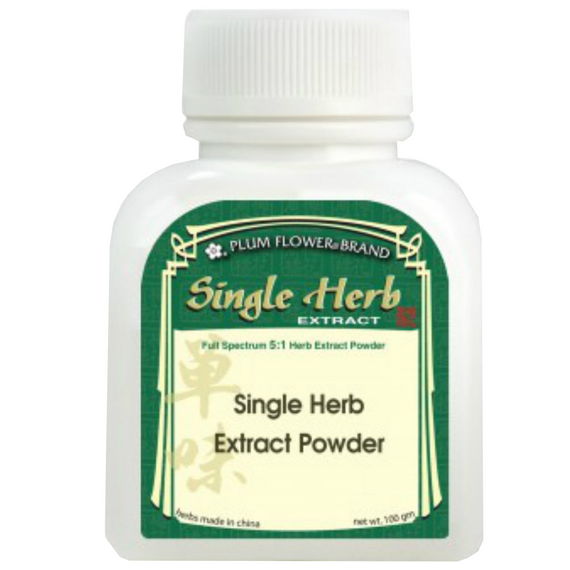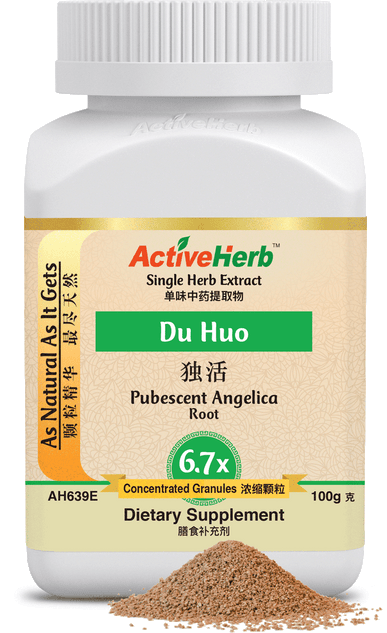Angelica Pubescens Root: The Ancient Herbal Remedy You Need to Know About
Angelica pubescens, commonly known as Du Huo, is a perennial herb that has been utilized in traditional medicine for centuries. This plant, native to the mountainous regions of China, is particularly revered for its root, which is rich in bioactive compounds. The root has been a staple in traditional Chinese medicine (TCM), where it is often employed to treat various ailments, particularly those related to pain and inflammation.
Its unique properties have garnered attention not only in Asia but also in Western herbal practices, making it a subject of interest for both herbalists and researchers alike. The significance of Angelica pubescens extends beyond its medicinal uses; it embodies a rich cultural heritage. In TCM, the root is classified as a warming herb, believed to invigorate the body's energy and promote circulation.
This aligns with the holistic approach of TCM, which emphasizes balance and harmony within the body. As interest in natural remedies continues to grow globally, understanding the historical context and traditional applications of Angelica pubescens root becomes increasingly important for those seeking alternative health solutions.
Understanding the benefits of Du Huo
- Angelica Pubescens Root has been used as a traditional herbal remedy for centuries and is known for its medicinal properties.
- The history and cultural significance of Angelica Pubescens Root dates back to ancient times, where it was used in traditional Chinese medicine.
- Traditional uses of Angelica Pubescens Root include treating joint pain, inflammation, and other health conditions.
- Modern research has shown potential applications of Angelica Pubescens Root in modern medicine, particularly in the treatment of arthritis and other inflammatory conditions.
- When using Angelica Pubescens Root for health and wellness, it is important to take precautions and consider potential side effects, especially when used in combination with other medications.
The History and Cultural Significance of Angelica Pubescens Root
The historical roots of Angelica pubescens can be traced back over a thousand years in Chinese herbal medicine. It was first documented in ancient texts such as the "Shennong Bencao Jing," attributed to the legendary Emperor Shennong, who is often regarded as the father of Chinese medicine. This text categorized various herbs based on their properties and uses, establishing a foundation for herbal practices that continue to this day.
Angelica pubescens was noted for its ability to alleviate lower back pain and joint discomfort, conditions that were prevalent among laborers and soldiers. Culturally, Angelica pubescens holds a significant place in various Chinese festivals and rituals. It is often associated with the concept of vitality and strength, symbolizing resilience against physical ailments.
In traditional practices, the root is not only used for medicinal purposes but also incorporated into culinary dishes, showcasing its versatility. The reverence for this herb is evident in its continued use in modern herbal formulations, where it is often combined with other herbs to enhance its therapeutic effects.
Understanding the Medicinal Properties of Angelica Pubescens Root
Angelica pubescens root is rich in essential oils, flavonoids, and coumarins, which contribute to its medicinal properties. These compounds are believed to possess anti-inflammatory, analgesic, and antispasmodic effects, making the root particularly effective for treating musculoskeletal pain and discomfort. Research has indicated that the bioactive components in Angelica pubescens can modulate inflammatory pathways, providing relief from conditions such as arthritis and lower back pain.
Moreover, studies have shown that Angelica pubescens may have adaptogenic properties, helping the body cope with stress and fatigue. This aligns with its traditional use as a tonic for enhancing physical endurance and vitality. The root's ability to promote blood circulation further supports its role in alleviating pain and improving overall health.
As scientific research continues to explore these properties, Angelica pubescens is gaining recognition as a valuable herbal remedy in both traditional and modern contexts.
Du Huo, and Angelica Pubescens Root: Exploring Traditional Uses
| Traditional Use | Benefit |
|---|---|
| Relieve Joint Pain | Anti-inflammatory properties |
| Improve Circulation | Enhance blood flow |
| Relieve Menstrual Cramps | Regulate menstrual cycle |
| Support Digestive Health | Relieve indigestion and bloating |
In traditional Chinese medicine, Du Huo is primarily used to treat conditions associated with "wind-damp" invasion, which refers to ailments characterized by pain and stiffness due to environmental factors. The root is often prescribed for lower back pain, joint issues, and even certain types of headaches. Herbalists frequently combine Angelica pubescens with other herbs such as cinnamon twig (Gui Zhi) or licorice root (Gan Cao) to create synergistic formulas that enhance its effectiveness.
Additionally, Du Huo is traditionally used in formulations aimed at strengthening the body's defenses against seasonal illnesses. Its warming properties are believed to help dispel coldness from the body, making it a popular choice during colder months or in regions with damp climates. The versatility of Angelica pubescens root in addressing various health concerns underscores its importance in traditional herbal practices.
Angelica Pubescens Root in Modern Medicine: Research and Applications
In recent years, there has been a surge of interest in the medicinal properties of Angelica pubescens root within the scientific community. Research studies have begun to validate many of the traditional claims associated with this herb. For instance, clinical trials have demonstrated its efficacy in reducing pain and inflammation in patients suffering from osteoarthritis and other musculoskeletal disorders.
These findings have prompted further investigation into the potential applications of Angelica pubescens in integrative medicine. Moreover, researchers are exploring the root's potential as an adjunct therapy for chronic conditions such as fibromyalgia and chronic fatigue syndrome. Preliminary studies suggest that Angelica pubescens may help improve quality of life by alleviating symptoms associated with these conditions.
As more evidence emerges regarding its safety and efficacy, Angelica pubescens root may find a more prominent place in modern herbal medicine and wellness practices.
How to Use Angelica Pubescens Root for Health and Wellness
Angelica pubescens root can be utilized in various forms, including teas, tinctures, capsules, and powders. One common method of preparation is to create a decoction by simmering the dried root in water for an extended period. This process extracts the beneficial compounds from the root, resulting in a potent herbal infusion that can be consumed daily for health benefits.
As with any herbal remedy, it is advisable to consult with a healthcare professional before incorporating Angelica pubescens into your wellness routine, especially if you are pregnant, nursing, or taking other medications.
Precautions and Considerations When Using Angelica Pubescens Root
While Angelica pubescens root is generally considered safe for most individuals when used appropriately, there are some precautions to keep in mind. Due to its warming nature, individuals with heat-related conditions or those prone to excessive sweating should use this herb cautiously. Additionally, people with certain medical conditions such as hypertension or those taking anticoagulant medications should consult their healthcare provider before using Angelica pubescens.
It is also important to source high-quality products from reputable suppliers to ensure purity and potency. As with any herbal remedy, individual responses may vary; therefore, starting with a lower dosage and gradually increasing it while monitoring for any adverse reactions is advisable. By taking these precautions into account, individuals can safely explore the potential benefits of Angelica pubescens root as part of their health and wellness regimen.
FAQs
What is Angelica Pubescens Root?
Angelica Pubescens Root, also known as Du Huo in traditional Chinese medicine, is a perennial herb native to China, Japan, and Korea. It has been used for centuries in traditional medicine for its medicinal properties.
What is the history and cultural significance of Angelica Pubescens Root?
Angelica Pubescens Root has a long history of use in traditional Chinese medicine, where it is valued for its ability to invigorate the blood, dispel wind, and alleviate pain. It is also an important herb in Japanese Kampo medicine and Korean traditional medicine.
What are the medicinal properties of Angelica Pubescens Root?
Angelica Pubescens Root is known for its anti-inflammatory, analgesic, and anti-rheumatic properties. It is used to treat conditions such as arthritis, rheumatism, and musculoskeletal pain.
What are the traditional uses of Angelica Pubescens Root?
In traditional Chinese medicine, Angelica Pubescens Root is used to treat conditions such as joint pain, muscle aches, and stiffness. It is often used in combination with other herbs to enhance its therapeutic effects.
What research and applications are there for Angelica Pubescens Root in modern medicine?
Modern research has shown that Angelica Pubescens Root has potential anti-inflammatory and pain-relieving effects. It is being studied for its potential use in treating conditions such as osteoarthritis and rheumatoid arthritis.
How can Angelica Pubescens Root be used for health and wellness?
Angelica Pubescens Root can be used in various forms, including as a tea, tincture, or topical ointment. It is often used to relieve pain and inflammation associated with musculoskeletal conditions.
What precautions and considerations should be taken when using Angelica Pubescens Root?
Angelica Pubescens Root should be used with caution, as it may interact with certain medications and cause side effects in some individuals. It is important to consult with a healthcare professional before using this herb, especially if you have any underlying health conditions.
Product Description on Angelica Pubescens Root in Bulk Powder Form
Common Name: Angelica Root,
Botanical Name: Angelica Pubescens Root
Channels/Meridians: Kidney, Bladder
Other Names: Tu-Huo, and Radix Angelicae Pubiscentis
Pin Yin Name: Du Huo
Other Ingredients: None, nothing has been added to this product.
Package Size: 1 pound
Form: Powder - Fine powder 80 to 100 mesh size (similar to the consistency of baking flour)
Origin: China
Brand: Nuherbs Lab Tested
Cautions: Do not use if pregnant or nursing. Do not use with high fever
California Prop 65
Naturally Occurring Chemical Components in Du Huo
- furanocoumarins
- columbianetin
- columbianetin acetate
- osthol
- isoimperatorin
- bergapten
- xanthotoxin
- columbia-nadin
- columbianetin-β-D-glcopy-ra-noside
- anpubesol
- angelol D, G, B
- γ-aminobutyric acid
Additional Information About Du Huo
- Disperses Wind Cold Dampness
- Releases the Exterior
- Du Huo is used in several formulas but one of the more known formulas is the Solitary Herbmit, also known as Du Huo Ji Sheng Wan
- Product Properties: Bitter, Acrid, Slightly Warm
About NuHerbs Lab Tested
Made at GMP internationally certified facilities (Good Manufacturing Practices) Quality control tests are done at the manufacturing site and at third party labs to confirm results.
Purity and Potency
Our Master Herbalist makes the initial identification and selection of the best herbs, based on time-tested methods.
Identity and purity of the selected herbs are confirmed via scientific analysis – microscopy, Thin-Layer Chromatography (TLC), High-Performance Thin-Layer Chromatography (HPTLC), and other "fit for purpose" technology.
The potency of our herbs meets or exceeds the standards designated by the Pharmacopoeia of the People's Republic of China.
Gei- Authenticity Herbs. Geo-authenticity has a direct correlation to potency because the environmental conditions affecting the plant are considered part of the nature of the herb. In TCM, sometimes the term used for this is Di Dao (authentic source). Di Dao means that it is always preferable to select Chinese herbs from wildcrafted or cultivated geo-authentic sources rather than non-native environments for both potency and authenticity.
Various quality indices are measured to ensure optimum quality of our herbs, such as water content, cut size, color, etc.
Safety
We screen for close to 200 pesticides, according to guidelines set by the United States Pharmacopoeia (USP) and the European Union (EU).
Our herbs are tested for heavy metals, such as lead, mercury, and arsenic.
Our herbs are tested for of microbacteria: total plate, yeast, mold, salmonella, and E. coli
Manufactured using Unsulfured, Chlorine free, Aluminum Phosphate free herbs when possible.
Microbials and heavy metals tested. No preservatives.
Traditional Chinese Herbs
Chinese Traditional herbs should be regarded as an added feature to modern western healthcare, and not as a replacement. Chinese traditional herbs (Teas) emphasize harmony, and balance.
Reference:
alternativehealing.org
https://onlinelibrary.wiley.com/doi/10.1155/2013/483286
https://journals.sagepub.com/doi/10.1177/1934578X221146616?icid=int.sj-abstract.similar-articles.9
https://pmc.ncbi.nlm.nih.gov/articles/PMC7094754/
https://pubmed.ncbi.nlm.nih.gov/7700984/
https://en.wikipedia.org/wiki/Angelica_pubescens


















